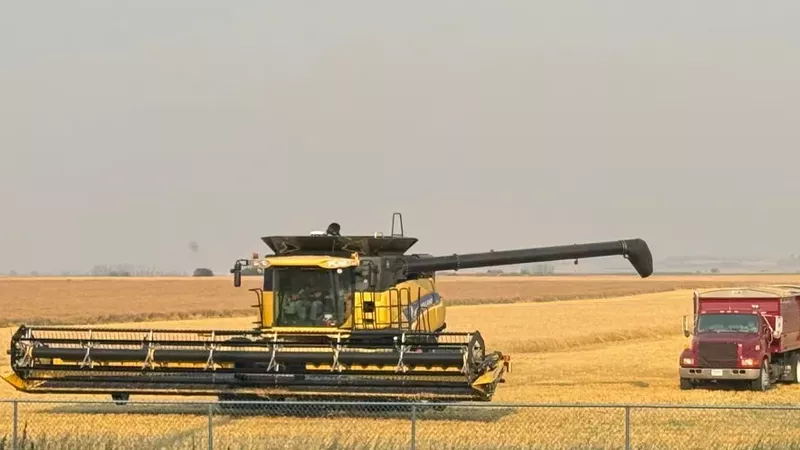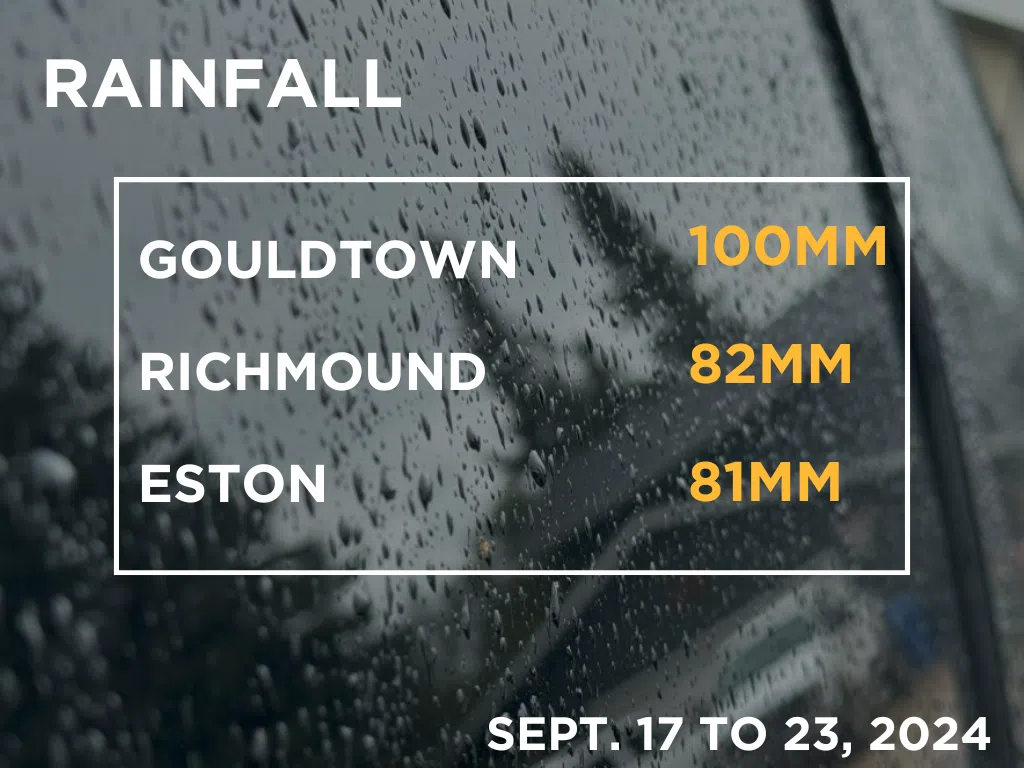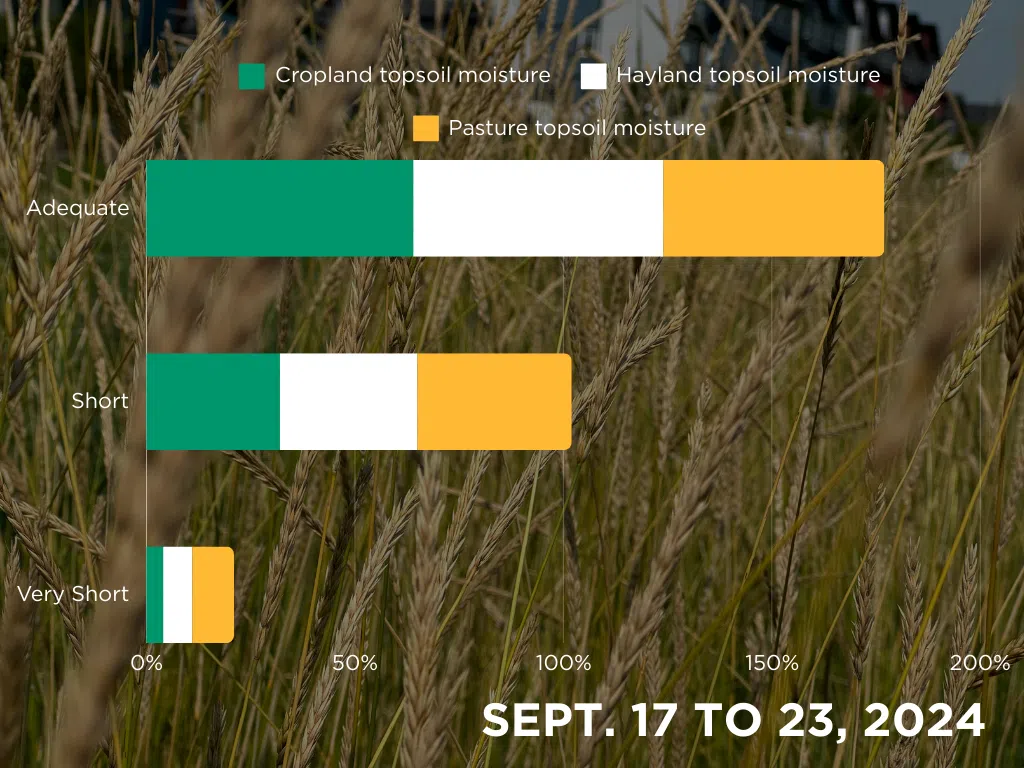
Rain causes delays as harvest nears 80 per cent completion
Rainfall slowed Saskatchewan farmers down over the past week as they worked to get their 2024 crops harvested.
According to the weekly crop report from the Ministry of Agriculture, which covered the week ending on Monday, harvest is 79 per cent complete across the province. That’s up just four per cent since last week’s report, but still ahead of the five-year average of 75 per cent and the 10-year average of 69 per cent.
 Harvest statistics for September 17 to 23, 2024, Crop Report. (Graphic by Céline Grimard, Photo by 650 CKOM)
Harvest statistics for September 17 to 23, 2024, Crop Report. (Graphic by Céline Grimard, Photo by 650 CKOM)“Although moisture has helped replenish topsoil moisture conditions and green up pastures for fall grazing, it has also caused concerns for downgrading of crop quality in areas yet to be harvested,” the ministry noted. “Producers in many regions are hopeful for drier conditions in the upcoming weeks to help with harvest progression.”




